This blog post lists some of my favorite curriculum choices for the third grade, or children ages 8-9, that I have used and loved.
By this stage of learning, narrating and writing has become more advanced, as third graders can typically give longer narrations and are ready to begin writing more. At this age, many children are also beginning to add time to their independent reading and schoolwork, working and reading for longer periods.
Because my family practices family-style learning, you may notice the overlap between this grade and others. I believe there is so much joy in learning together and adapting each study for different grades and interests. Keep in mind I didn’t use all of these resources at the same time. This is simply a list of various resources I have enjoyed over many years when my children were in this stage of learning.
In this blog post:
- Our homeschool style
- Third grade homeschool schedule
- Third grade homeschool curriculum choices
Our homeschool style

Family-style learning
As you may know, in my homeschool we do not emphasize labeling grade levels. This is because we do much of our schoolwork “family-style.” Family-style learning means we use the same curricula for my children at different ages, tailoring the material to their levels. This way, my children learn together, despite being at various ages. While my children also have work they do independently that is tailored to their levels, the majority of our curricula can be tailored to use with all of my children, together. Lesson planning is streamlined and fosters sibling bonding as we do lessons together.
Respectful learning
Rather than forcing my children into specific grade levels, I allow them to progress at their own pace. Sometimes this means they are above “grade level” according to curriculum labels or state standards. Sometimes this means they are “behind.” My goal as a homeschooling parent is simple: To see that my children are continually growing in understanding, in skills, and in the desire to learn. I want them to enjoy their education, while also being challenged at just the right level.
Charlotte Mason-style
While I do not subscribe to one specific methodology of education, I do lean toward Charlotte Mason principles. I value learning through living books, life experiences, and educating the whole child (not only the mind). Take this Homeschool Style Quiz to see what learning styles fit your family best.
Third grade homeschool schedule
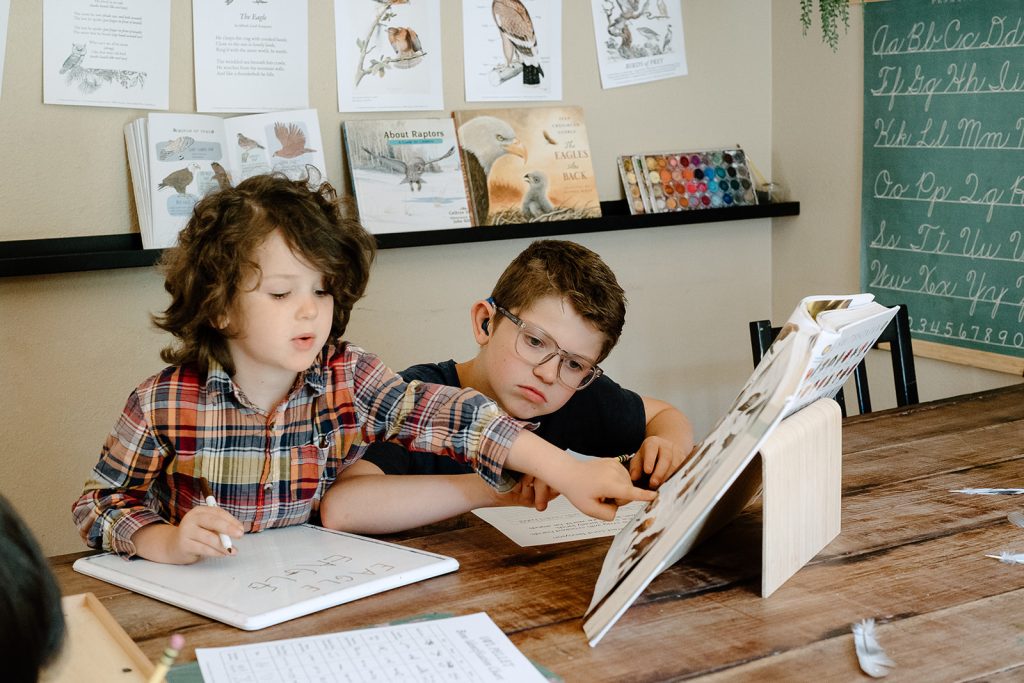
In my homeschool, a third-grade child does formal lessons about four hours a day, four days each week. We usually do school lessons Monday through Thursday, and spend Fridays outdoors with our homeschool nature group.
Here’s a breakdown of what a day may look like:
- Family devotions: 30 minutes
- Morning Time (art, poetry, nature, literature): 1 hour
- Core subjects (math, grammar, reading): 1 hour
- Read-aloud, oral narration, research, and notebooking: 1 hour
- Rotating subjects (history, geography, science, etc.): 30 minutes
Third grade homeschool curriculum choices
In my homeschool, we start the day with a family devotional over breakfast. When we are ready to begin our school day, we do Morning Time, where we go through our family-style curriculum together. Then we work through core subjects like language arts, math, and social studies.
Family devotionals
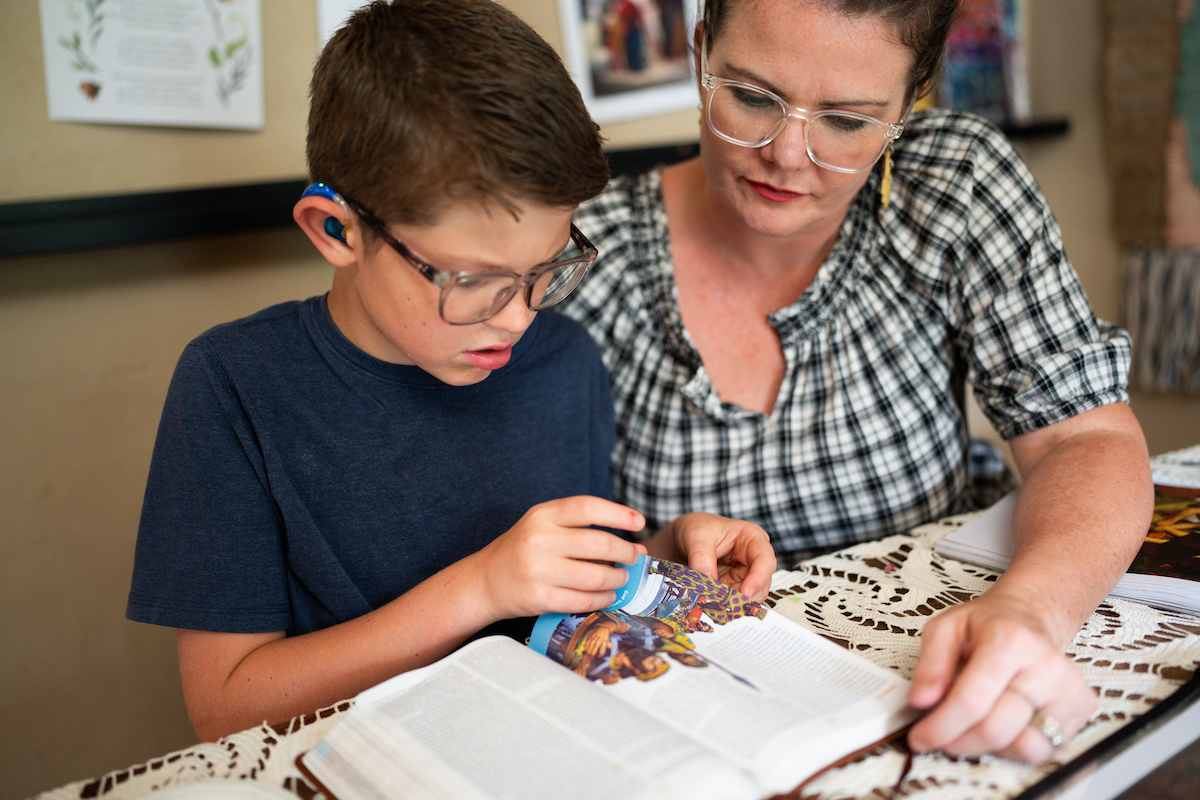
My husband leads this time over breakfast. We have used various resources over the years, but my favorites are Rooted Family Bible Curriculum, Our 24 Family Ways, and Hero Tales.
Rooted Family Bible Curriculum
Rooted incorporates Bible readings, discussion, scripture memorization, prayer, hymns, art study, poetry, and simple hands-on connections. I designed it to intertwine beauty subjects with Bible study. The curriculum is centered on declarations about identity in Christ and their choices to live a life devoted to God.
Our 24 Family Ways: A Family Devotional Guide
The book’s premise is that you as a parent create the culture in your home of how your family thinks and acts. Based on the idea that Christians are called to “train up a child in the way he should go,” the author maps 24 ways to teach and instruct children. I loved this idea because it articulates the character traits I want my children to have.
Hero Tales: A Family Treasury of True Stories from the Lives of Christian Heroes
Hero Tales is an illustrated storybook that presents the true-life stories of fifteen key Christian heroes. Each hero is profiled in a short biography and three educational yet exciting and thought-provoking anecdotes from his or her life.
Morning Time

Our formal school time begins each day with Morning Time. During Morning Time, my children and I gather together around the table and connect with different subjects where we can all share and learn together. We may check in with the calendar, literature, nature study, and more. I love beginning the day together and using this time as a springboard for the rest of our studies.
Here is what I use in Morning Time for children ages 8-9.
Calendar and Weather Chart
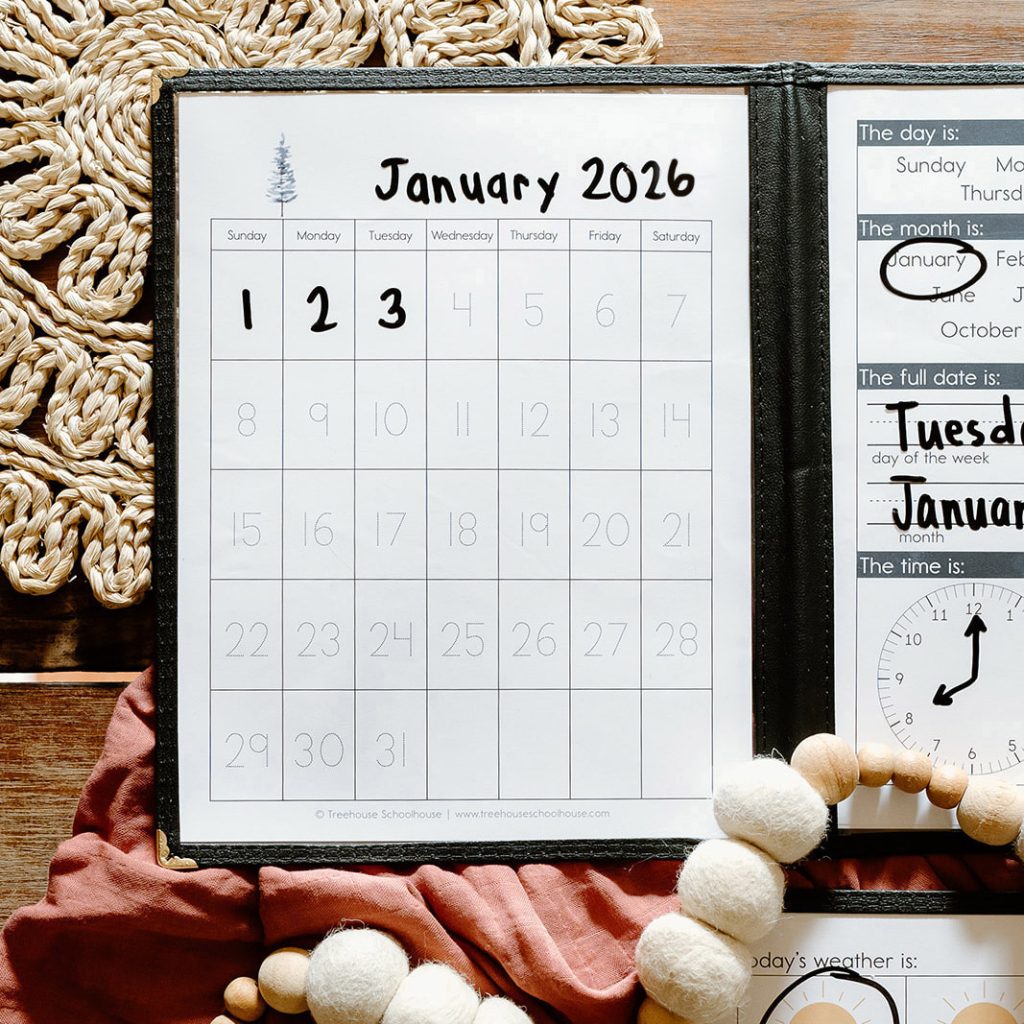
We use the Morning Time Bundle, which includes a traceable calendar and weather chart. Older children can use the Morning Time Bundle to chart the weather, daily date and time, and document the moon phase.
Literature with other subject connections

Treehouse Book Studies are great for Morning Time because it’s designed to be family-style and can engage children of multiple ages. Read aloud great literature and then learn about various themes in the story. This could be watching videos that teach about the book’s historical elements, sketching a topic we read about in the story, or reading more picture books about ideas presented in the story. You document your learning through notebooking.
For a third grader, the focus is narrating, learning how to research, and notebooking. For notebooking at this age, they usually write two or more paragraphs for each notebook page and are growing in their art skills by using tutorials and various mediums. They also complete the Book Report Booklet throughout the study, which includes writing and drawing on topics like characters, plot, and the author.
Treehouse Book Studies are also an excellent choice for families looking for ways to collaborate and interact with friends by implementing a format for book club, plus options for presentations and group activities.
Nature study with music, art, and poetry
Treehouse Nature Study has been a staple of our Morning Time for years. It’s a fun way to begin a day with fun family learning. Each week of Treehouse Nature Study covers a seasonal nature theme and includes songs, hand rhymes, poetry, art study, an extensive book list, and hands-on connections. The study is meant to be used year after year and includes so much that we will easily go deeper and wider this year than last with no problem. All of my children engage with elements of this, so it’s easy and fun to include them all.
Core subjects for third grade

Language Arts: Grammar, spelling, handwriting, and reading
We approach language arts in a holistic way. This means children learn through narrations, copywork, notebooking, and organic writing opportunities. While some homeschooling parents prefer to have separate curricula for each language arts “subject,” I prefer to use living books and curriculum and expand on it to offer language arts learning.
We typically introduce cursive at this age. I recommend the cursive books from Learning Without Tears alongside copywork using Wonder of Nature Cursive Copywork.
Usually by third grade, children have strong phonics understanding, but they may need support in this area. If your child would benefit from phonics work, I love Explode the Code. Explode The Code offers 17 phonics workbooks, ranging from Primer levels (preschool) through Book 8 (somewhere between grades 2-4). This also includes the “half levels,” which are more practice of the main levels for children who may need more time to master a skill before moving on.
For third-grade grammar we use Fix-it! Grammar, starting with Level 1: The Nose Tree. In Fix-it! Grammar, students search for and correct errors in passages that cumulatively tell a story. It is an incremental program that encourages students to apply new grammar knowledge in every lesson while continuing to practice what they already know.
We also practice Mail Monday where each of my children writes a letter to anyone on Mondays. When we do this, I expect around six to eight sentences for this age and check for proper grammar and spelling.
Around third grade, if my child is struggling with spelling we may use a spelling book like Evan-Moor’s Spell and Write. If not, we don’t use anything formal for spelling and instead, continue copywork and notebooking and practice spelling in an organic way.
Here are some other practices and resources I use for these subjects:
- Copywork: Each day the kids will have a selection to copy or write from dictation. This is for handwriting, spelling, and grammar. Sometimes this selection will be a passage of scripture we are memorizing, an excerpt of a poem, a quote, or a selection of literature from something we are reading. Sometimes they will write in cursive and other times in print.
- Grammar: I like to do one page each day in their Daily Grams workbooks for grammar review. In third grade, we focus on capitalization, punctuation, and combining sentences. This is something a child can do independently. We also use Simply Grammar by Karen Andreola. The lessons are based on the Charlotte Mason philosophy of education and are completed orally.
- Literature and narrations: Each morning I read aloud from a selection of literature from Treehouse Book Studies. We often do this during Morning Time. My children use the Book Report Booklet to write out narrations from the reading each day.
- Writing: Each Monday my children participate in Mail Monday, an informal way to practice writing skills by writing letters. They also complete written narrations throughout the year, as well as stories, research papers, and notebooking pages. I don’t use a formal curriculum for writing at this age.
- Independent Reading: I like for a third-grade student to spend 20-30 minutes each day reading independently. Around this age, they will occasionally write a paragraph written narration of their reading. The chapter books they read are from “Mom’s Library,” a basket of books I curate primarily from the “Free Reads” lists in Ambleside Online years 2-5 plus others from other book lists I trust for them to choose from.
- Notebooking: Notebooking is central to so many of our lessons. There are notebooking opportunities in Rooted Family Bible Curriculum, Treehouse Book Studies, and Treehouse Nature Study. For a fifth-grader I am looking for multiple paragraphs about the topic we are studying with correct spelling and grammar. I love using notebooking as a way to explore new topics and document our learning.
Math
We have tried various math curricula over the years. Finding the right fit has a lot to do with the child’s learning style and the parent’s preference. Some of my favorite math curricula that I recommend for third grade are Teaching Textbooks, Math-U-See, Saxon Math, Charlotte Mason Arithmetic Series, and RightStart Mathematics.
- Teaching Textbooks is a spiral-approach, digital math curriculum that offers teaching videos, math problems, and grades every single math problem with instant feedback. Teaching Textbooks gently introduces new math concepts in plain, easy-to-understand language and in an engaging way. The formatting makes math approachable and fun for students, without being over-stimulating. This is a great option for kids who can work independently in math.
- Math-U-See is a solution for struggling math students with gaps in their foundational math skill set. The Accelerated Individualized Mastery (AIM) programs use strategies and manipulatives in combination with an accelerated approach to help students successfully master math facts.
- Saxon Math has been around for decades and uses an incremental approach to instruction and assessment. I like it because it limits the amount of new math principles delivered to students and allows time for daily practice.
- Charlotte Mason Arithmetic Series from Simply Charlotte Mason are short lessons that help students advance in addition, subtraction, multiplication, and division up to 10,000; introduce fractions; and provide a hands-on exploration of weights and measures. Lessons are mainly oral and are carefully graduated, and children will answer small word problems within their understanding (no reading required). Problems are worked out in a straightforward, hands-on way using everyday objects.
- RightStart Mathematics is a comprehensive math curriculum that emphasizes visual learning and de-emphasizes counting. It provides visual strategies for learning facts and emphasizes problem-solving.
Geography, history, and science
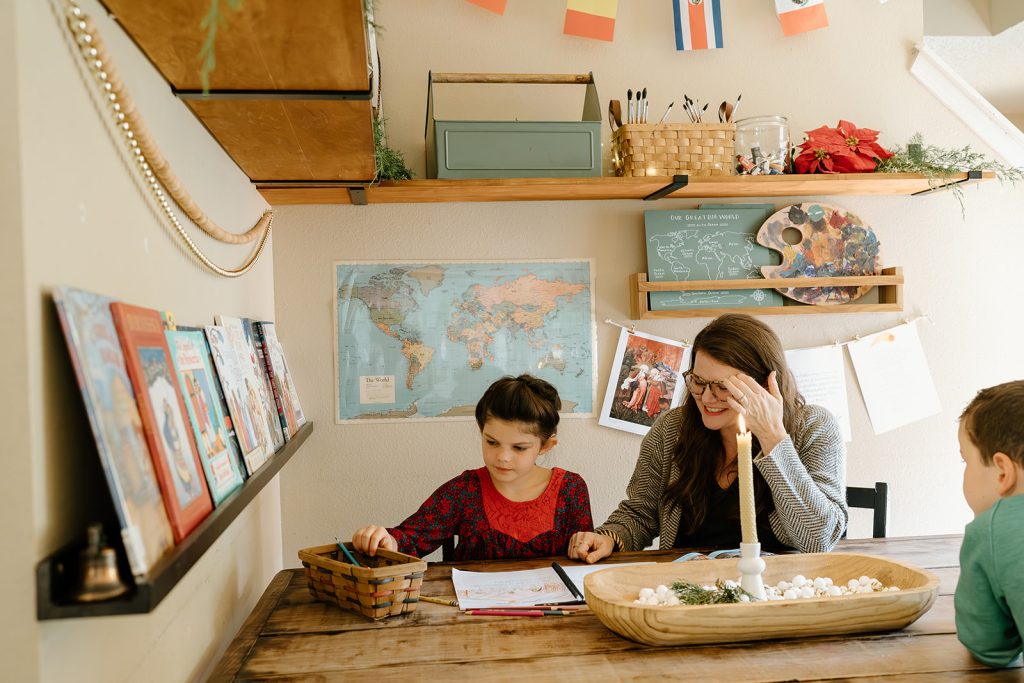
My favorite curricula explore different subjects through reading literature. Instead of going through a textbook, these studies pull from a curated collection of literature to use stories and different writers to provide knowledge about differentsubjects.
- Holling C. Holling Geography Study (Beautiful Feet Books) is centered on the books by Holling C. Holling that takes students on a literature-centered adventure through the United States, studying the Great Lakes and Eastern seaboard, states, national landmarks, bodies of water, natural science, indigenous animals, and industry. Students will practice mapping skills and notebooking as they work through the study.
- World Changers Package (My Father’s World) – This curriculum features 32 people who changed the world from a Christian perspective. It includes stories, hands-on activities, and an overview of world history.
- Treehouse Book Studies allow us to use literature as a lens to study historical and scientific themes in the books we are reading. We may break out and research the historical context of the book, inventions in the period, historical figures, and more. I love being able to incorporate these subjects into something else we are working through.
- Adventures in U.S. History (My Father’s World) – This resource explores history and science from a Christian perspective. Children will learn as they read stories, do hands-on activities, make a timeline, and create a history notebook.
- Early American History Study (Beautiful Feet Books) – This literature-based curriculum surveys topics from the first Indigenous people of the Americas, the Vikings discovery of America, the exploration, colonization, settlement, and the establishment of the United States, spanning 1000 AD to the mid-1800’s.
- Treehouse Nature Study – At this age, we use Treehouse Nature Study to study themes in nature and science. This may be as simple as learning the phases of the moon, or more detailed like dissecting a flower or building a wormery. We have used this resource for years and love the flexibility to adapt it to different ages and learning levels.
Enrichment Subjects

For third grade, we add enrichment activities throughout the year. Here are some of my favorites.
- Piano: My children love taking piano lessons from Hoffman Academy this year. Each day they do a lesson and spend time practicing. We have family recitals for them to share what they are learning every couple of months!
- Typing: We do a Keyboarding Without Tears lesson a couple of days each week for typing practice.
- Art and drawing: We do a lot of art and drawing in our notebooking by following online watercolor and sketching tutorials. We also have an Art For Kids Hub subscription, and my kids also like doing origami.
- Holiday studies: We use a holiday study like A Connected Christmas: Around the World to prepare for Christmas. This includes Bible readings about the nativity story and a look at how the Christmas season is celebrated in different countries throughout the world. We will also use An Expectant Easter to learn about the resurrection in the weeks leading up to Easter.
- Practical skills and handcrafts: Many of our studies include crafts and baking projects. We will introduce them to many handcrafts and skills over the year such as woodworking, crocheting, cross stitching, leatherwork, and bread making.
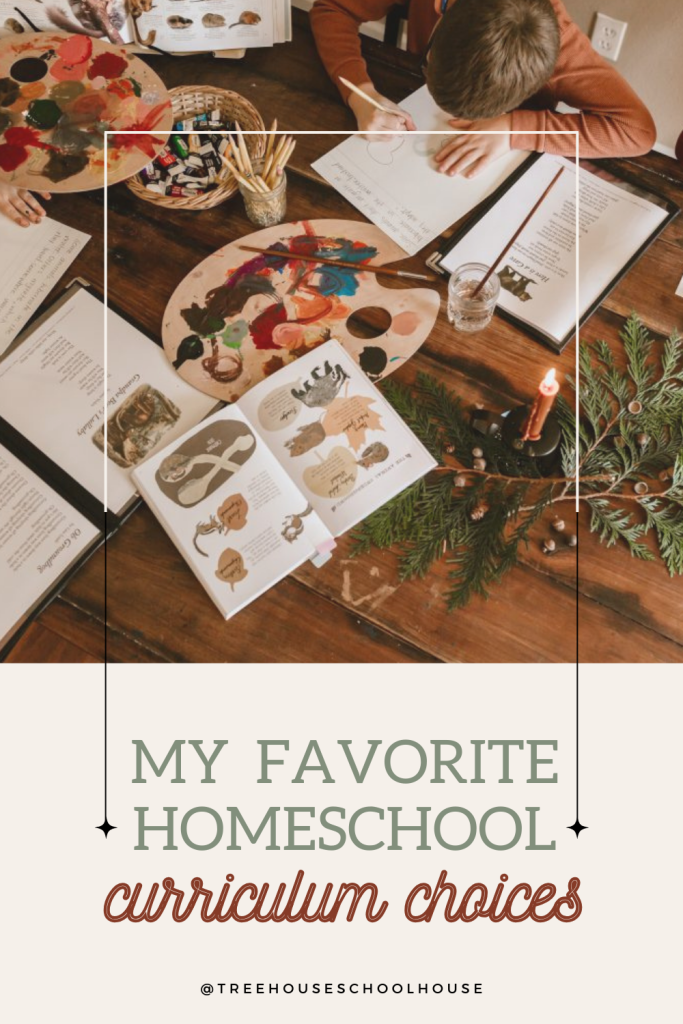



![Winter Solstice Activity for Kids [Free Worksheet PDF]](https://storage.googleapis.com/treehouse-schoolhouse-media-dev/fe547f4b-gn4a7877-scaled.jpg)